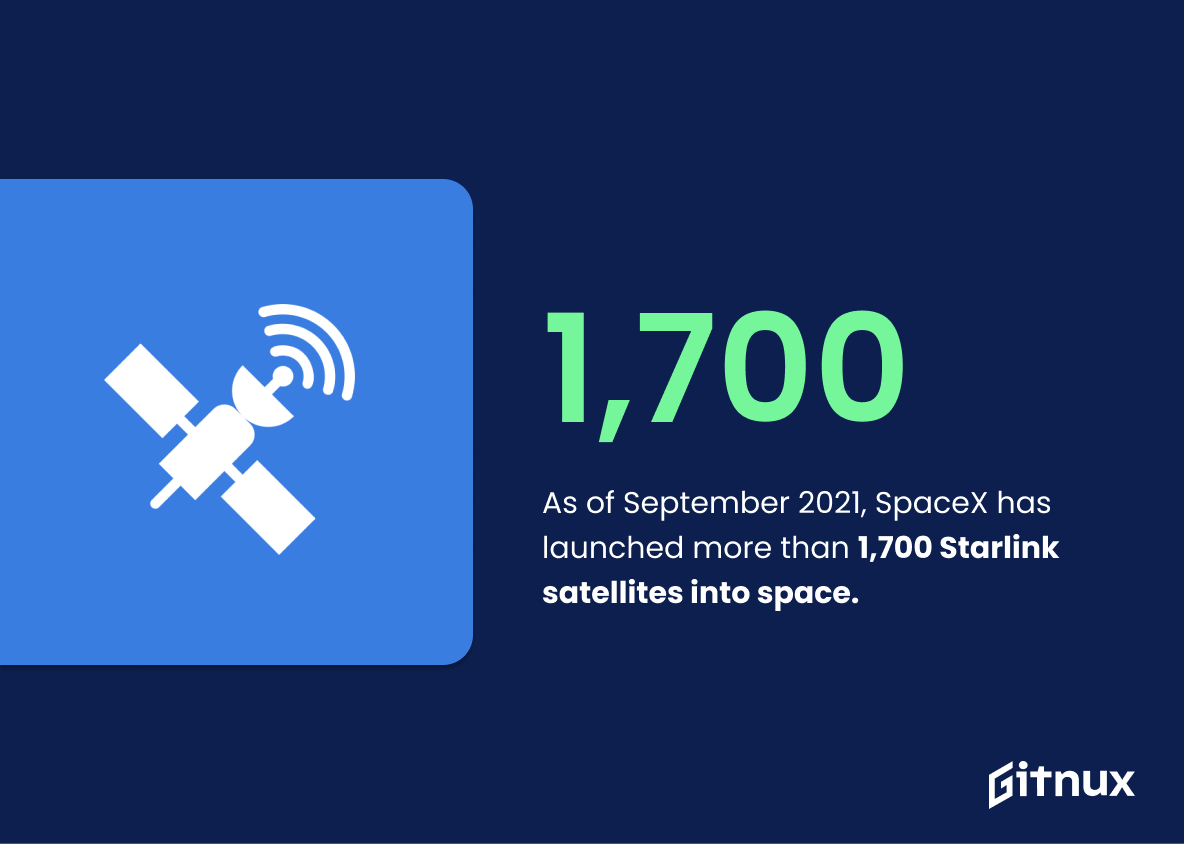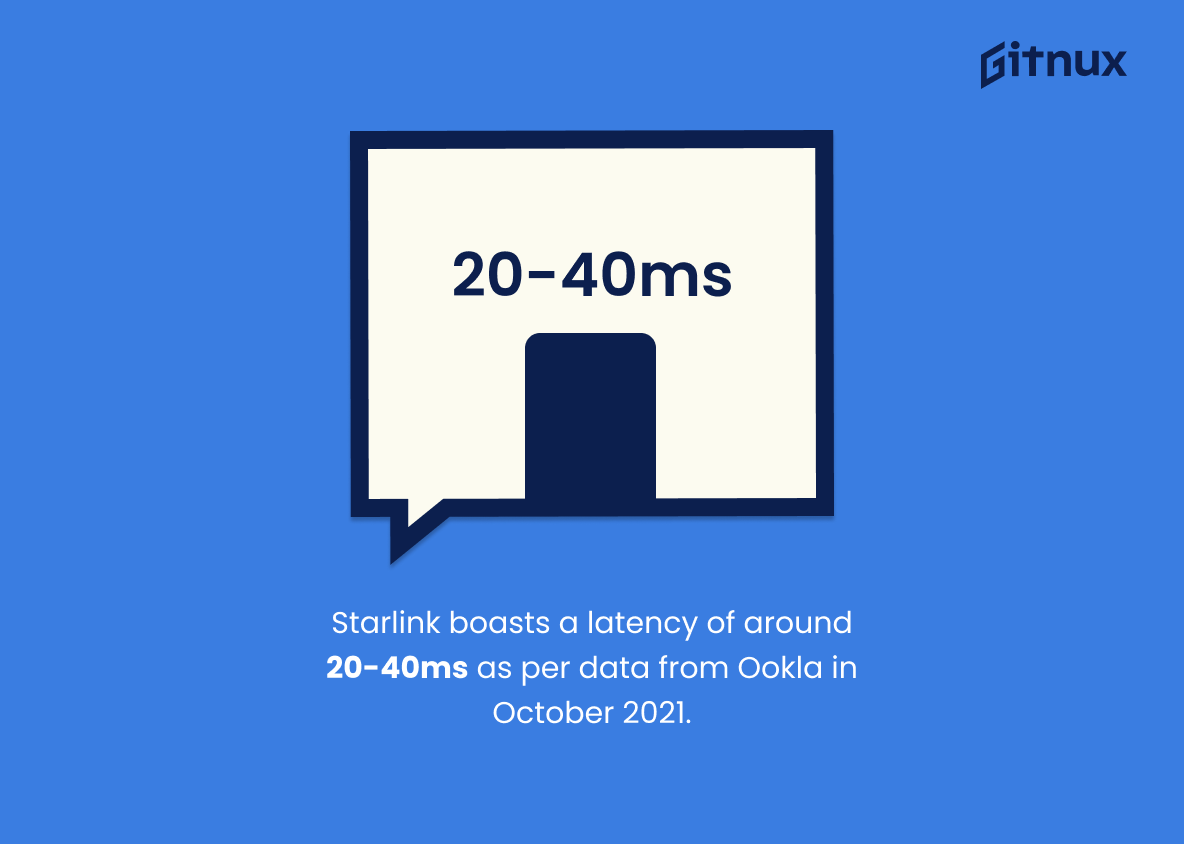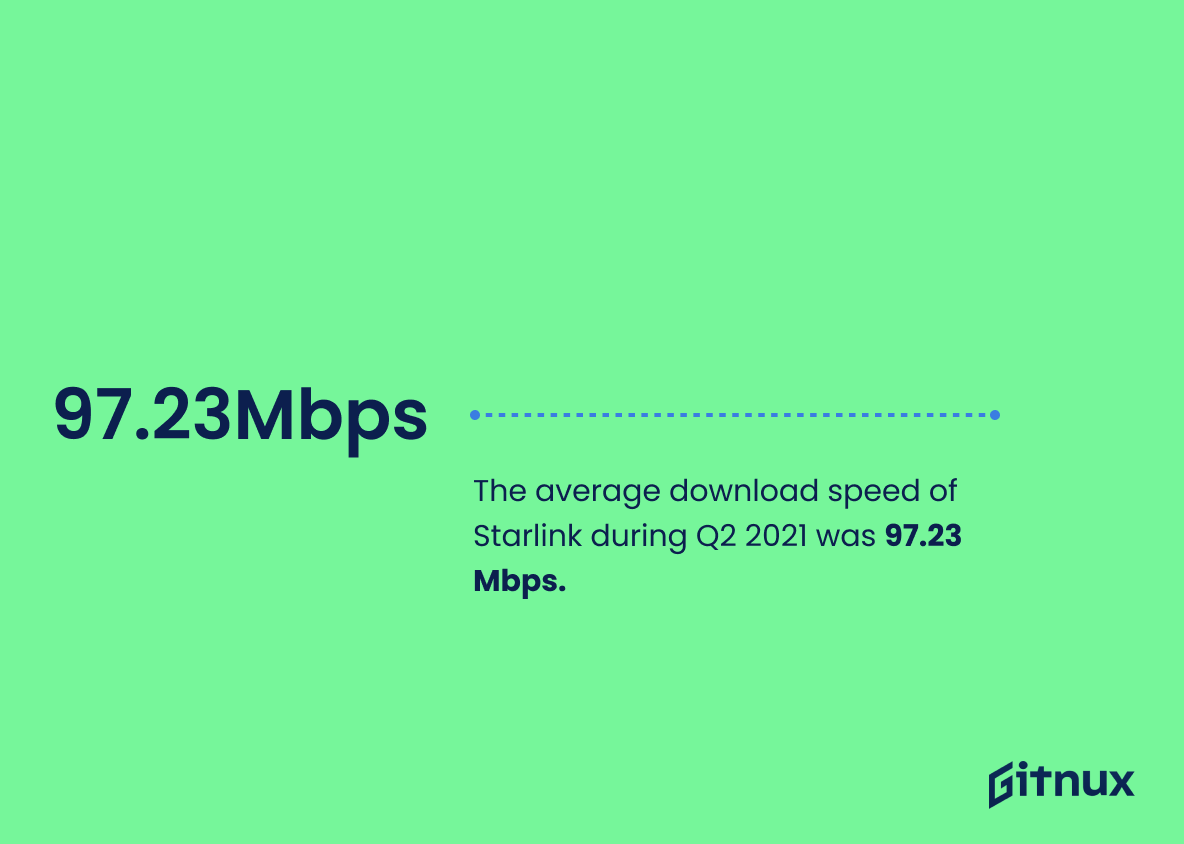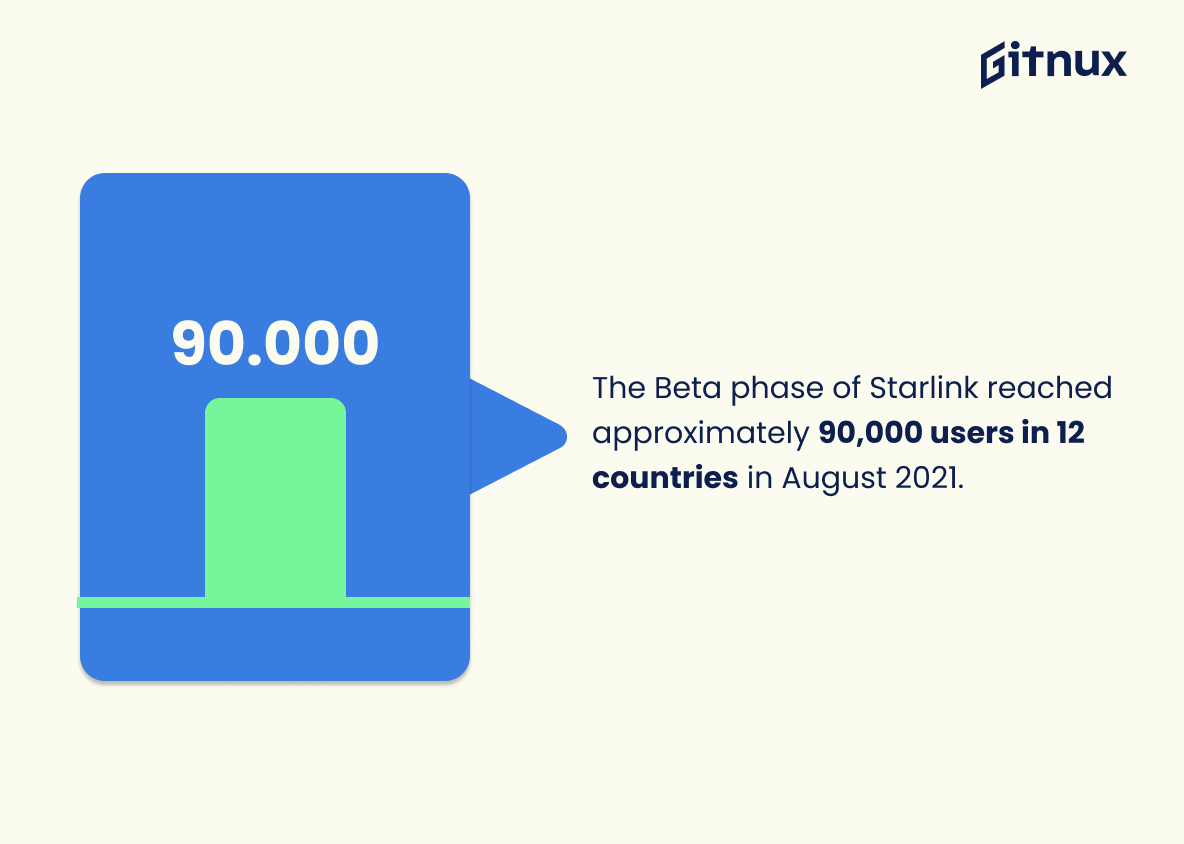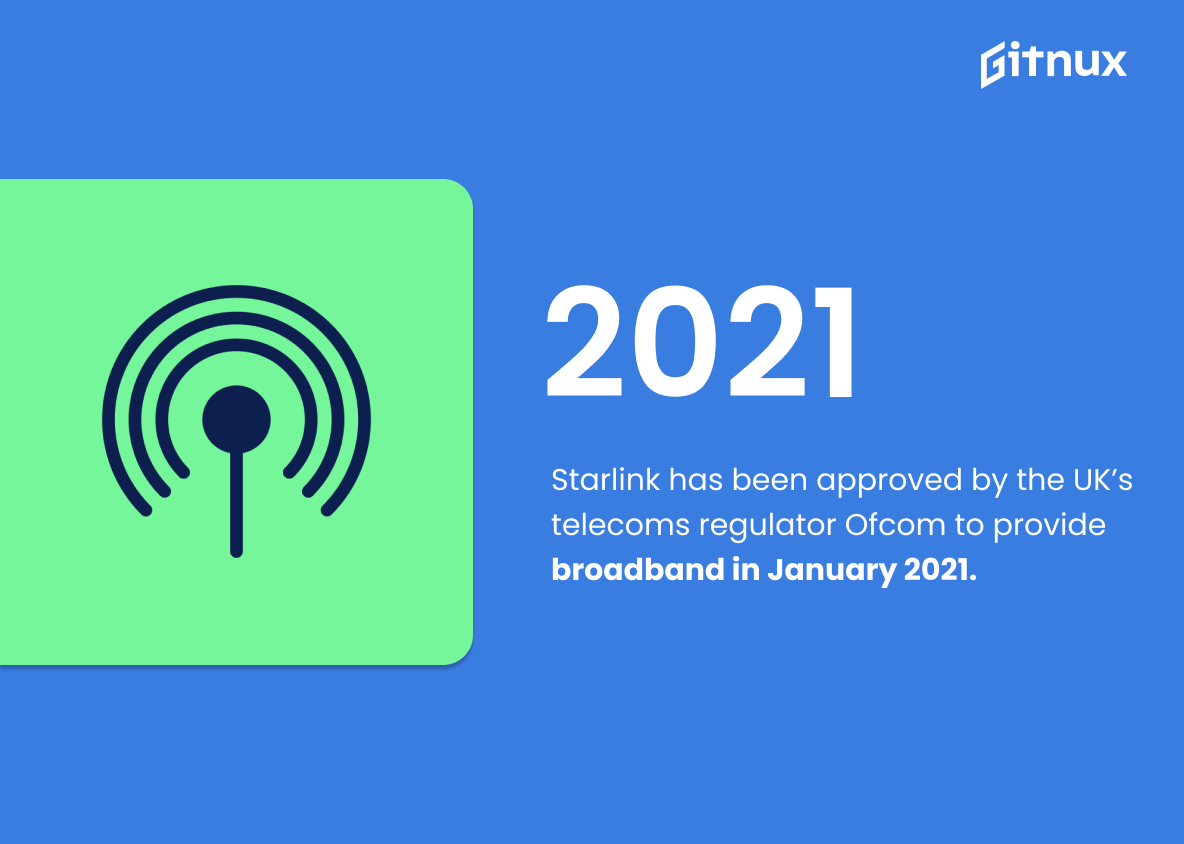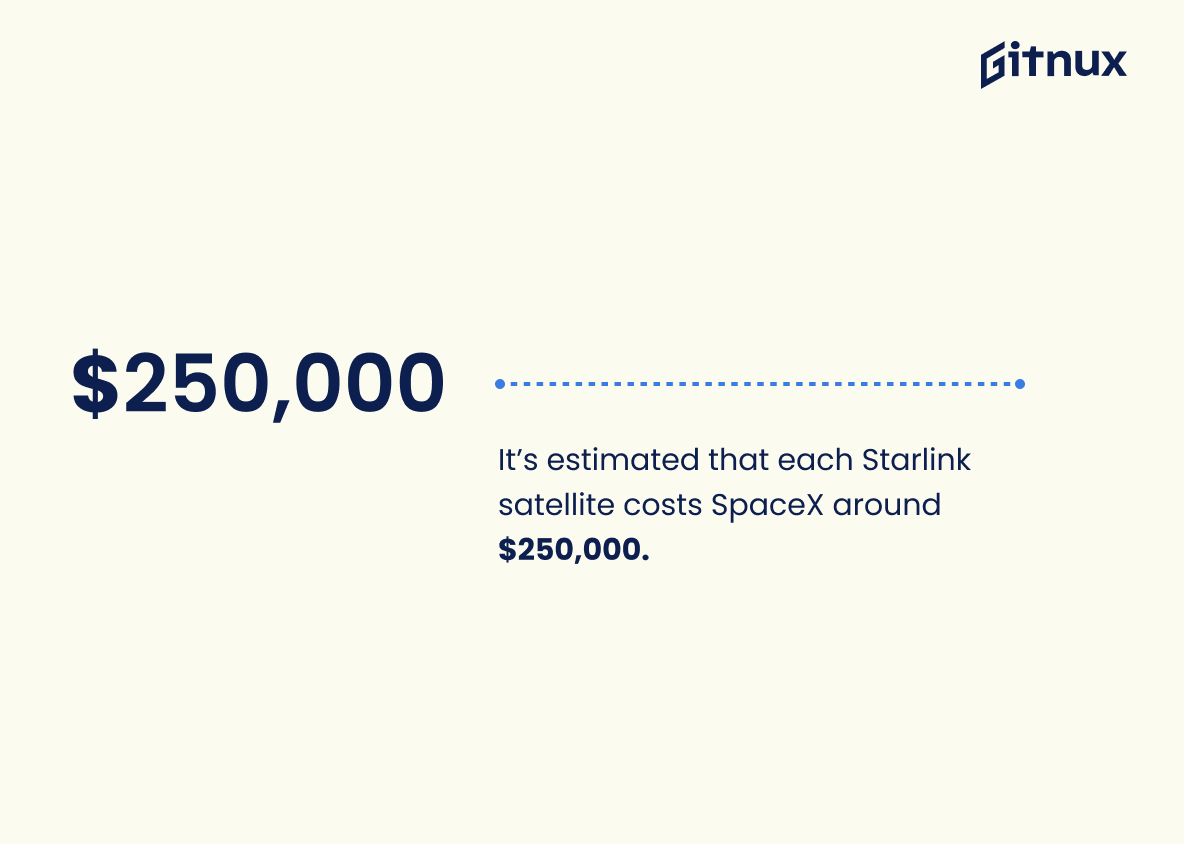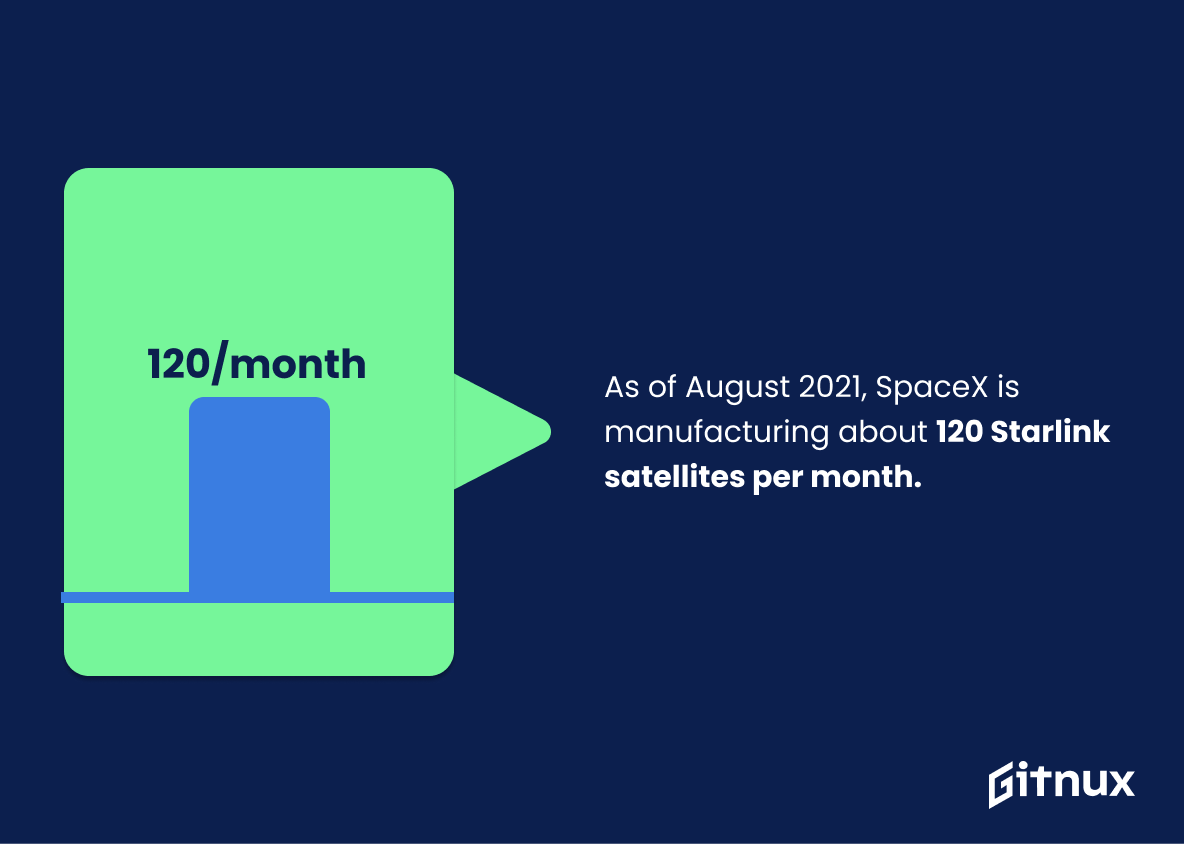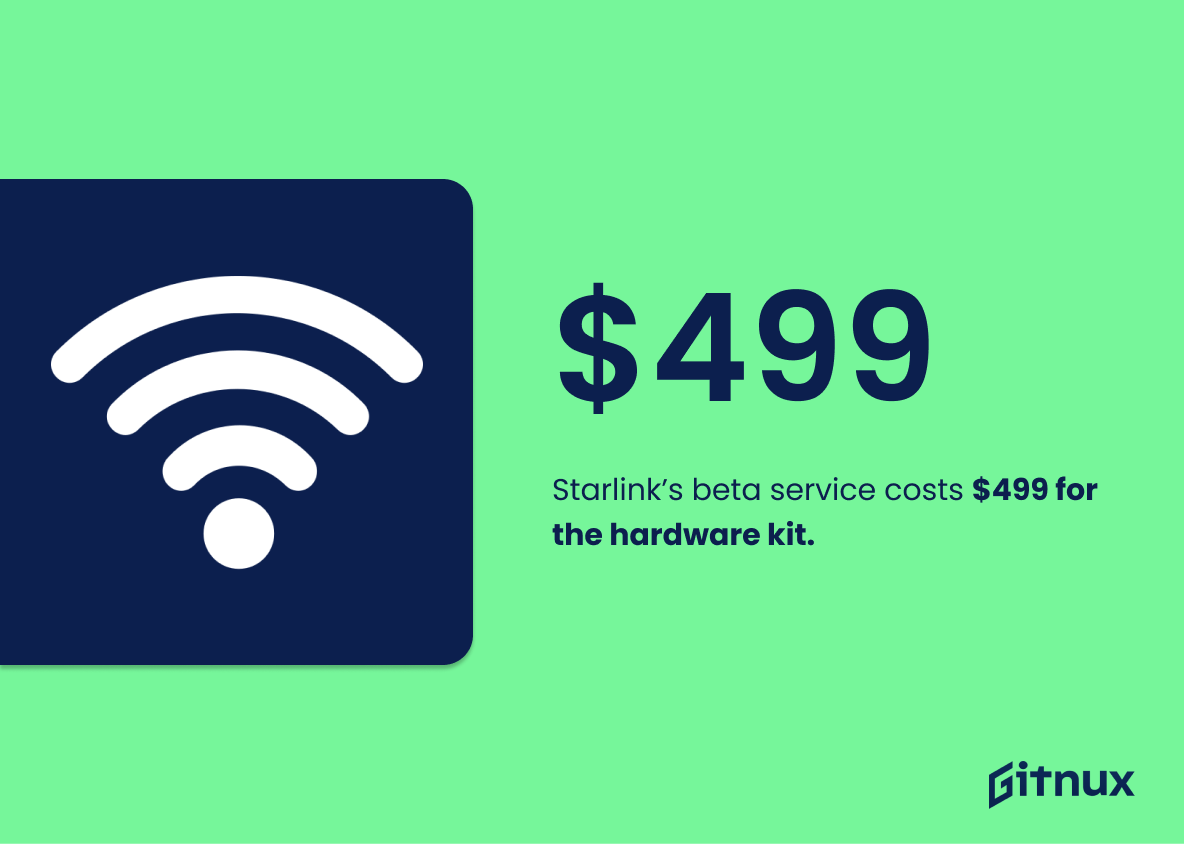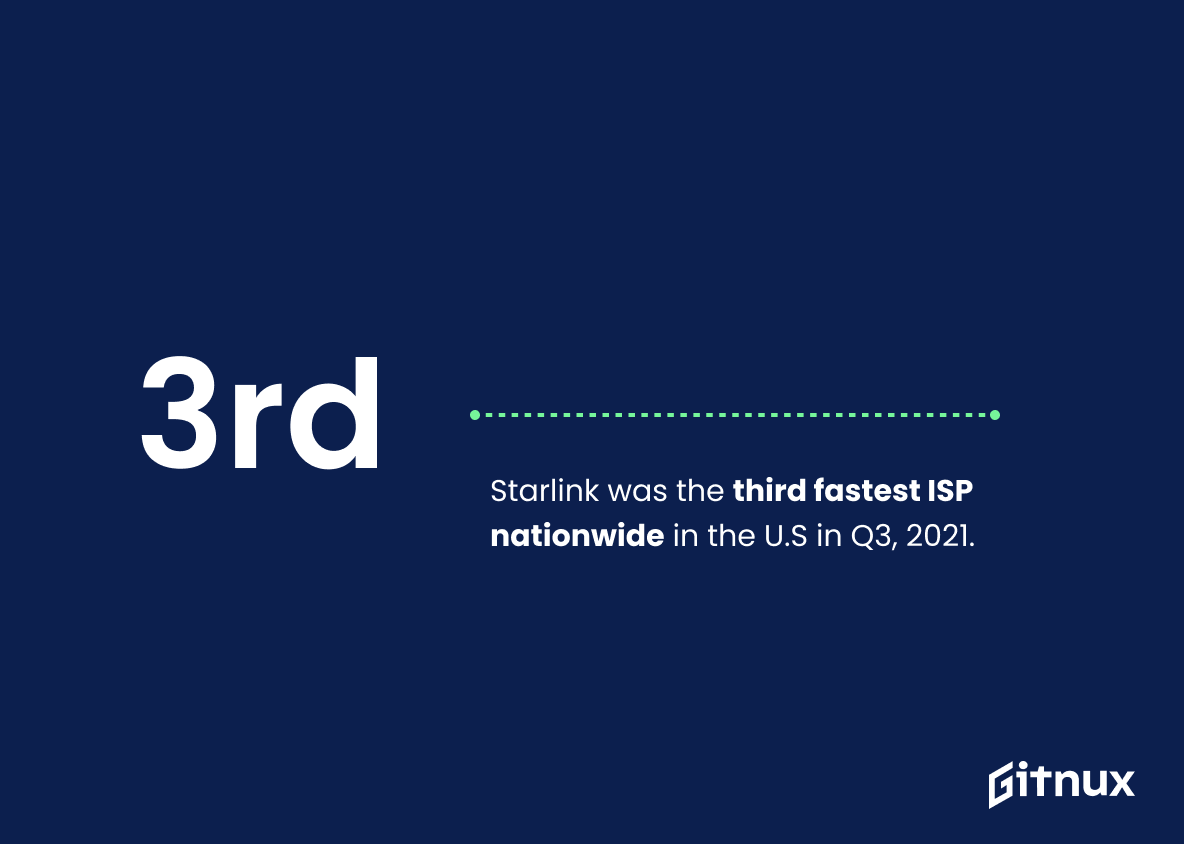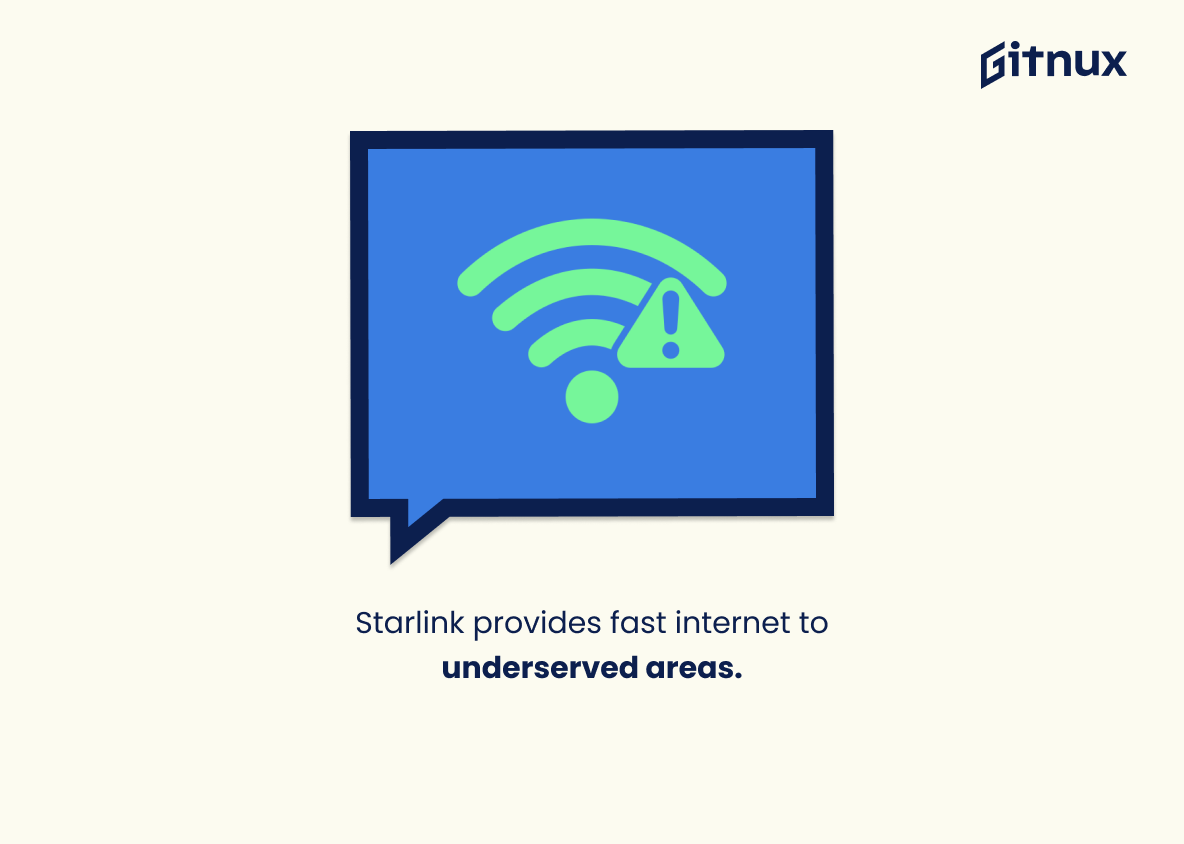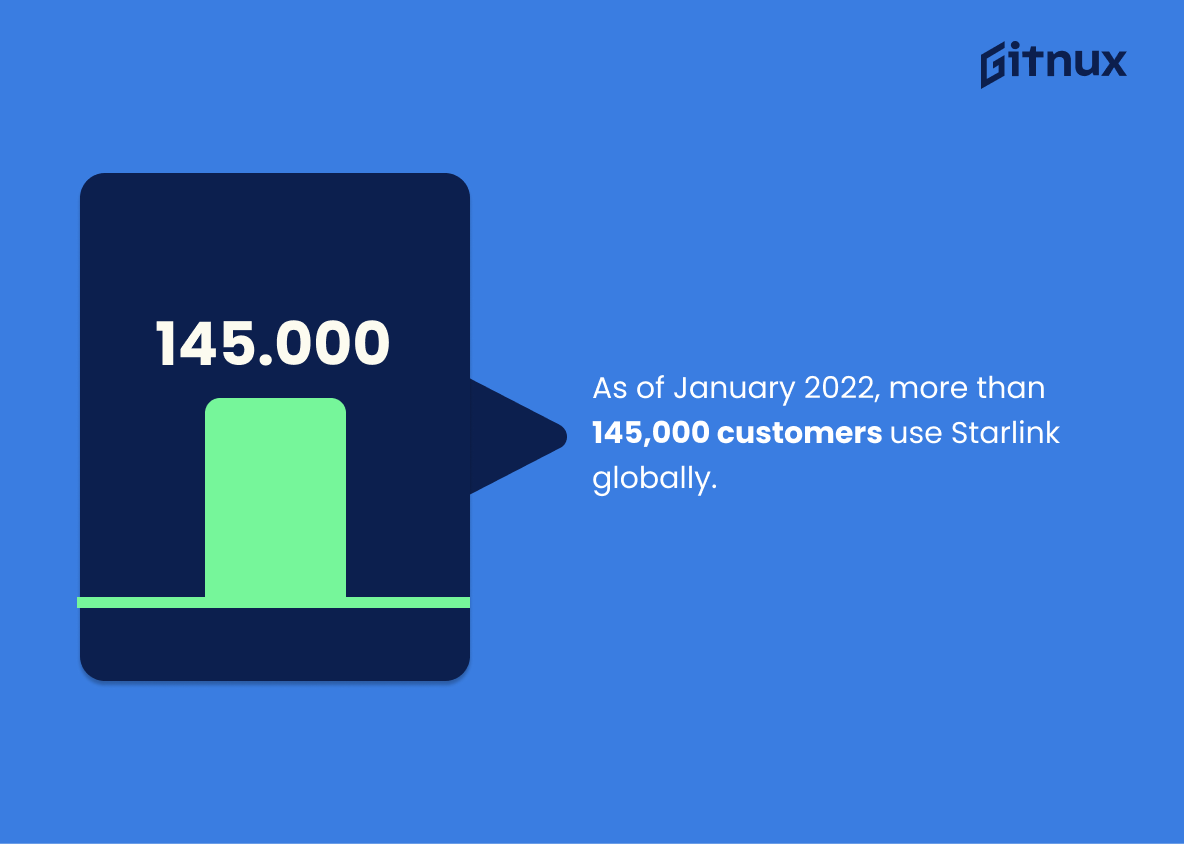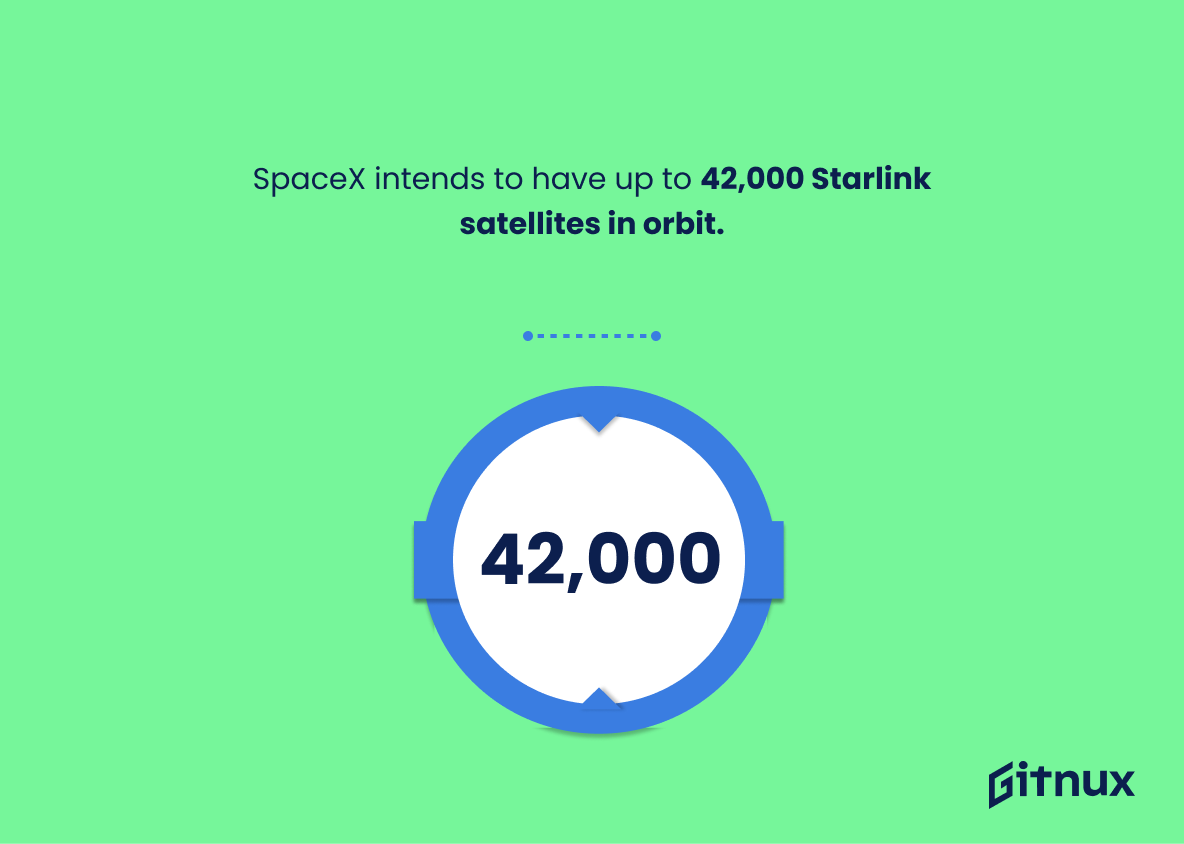As we embark on a new era in technology, our eyes move heavenward towards the ever-expanding frontier of space innovation. Among the protagonists of this celestial plot is Starlink – SpaceX’s ambitious project designed to provide high-speed, reliable internet across the globe. But what do we know about this forward-thinking endeavor? It’s all in the numbers. In this blog post, we’ll delve into Starlink Statistics, a fascinating culmination of figures and facts. We’ll unlock key insights about this satellite constellation, peek into its coverage area, network capabilities, and the overall impact it’s set to exert on our connected world. Whether you’re an avid tech enthusiast or a curious onlooker, let’s gear up to navigate the galaxy of numbers behind Starlink’s journey and potential.
The Latest Starlink Statistics Unveiled
As of September 2021, SpaceX has launched more than 1,700 Starlink satellites into space.
Highlighting the launch of more than 1,700 Starlink satellites by SpaceX till September 2021, unravels the dynamism in their strategic advancements. It’s not just a numerical figure, but a testament to SpaceX’s technological prowess as well as an indication of the intensifying efforts towards achieving a broadband internet system globally. This numbers illuminates how SpaceX is steadily painting the canvas of the cosmos with its myriad satellites, a scenario crucial for readers interested in learning about the unfolding storyline of Starlink.
Starlink boasts a latency of around 20-40ms as per data from Ookla in October 2021.
In the galaxy of Starlink Statistics, the sparkling statistic reflecting an impressive latency range of around 20-40ms, as per Ookla’s October 2021 data, is a vital beacon. It’s akin to the pulse rate in the human body; attesting to the robust health and efficiency of Starlink’s broadband service. This compelling numeric fact reflects the swiftness of data transmission, a critical aspect in our digitally driven cosmos where minimal delay is crucial for a seamless online experience. This figure not only underlines the commitment of Starlink to overcome the challenges of satellite internet but also conveys the quantum leap in quality of service for the user. It illuminatively communicates that Starlink possess the necessary velocity and vitality to rival ground-based ISPs, offering a stream of opportunities for users in remote locations or under-serviced areas.
The average download speed of Starlink during Q2 2021 was 97.23 Mbps.
Draping the aura of the blog post with the astounding figure of ‘97.23 Mbps’, the average download speed of Starlink during Q2 2021, one can’t help but admire the pace of Starlink’s progress. This numeric representation serves as a tangible marker of the service orientation and technological prowess put forth by Starlink, adding credibility to its claims. As readers glide through the phrases, this figure would act as an anchor- robust and reassuring, vouching for Starlink’s superior performance and highlighting its commitment to ensuring optimal user experience. It empowers readers to form a clear, data-driven perspective, encouraging informed discussions on Starlink’s stance in the global frontier of internet connectivity. Engaging with this number not only facilitates a deeper understanding of Starlink’s current standing but also serves as a benchmark for its future endeavors.
The Beta phase of Starlink reached approximately 90,000 users in 12 countries in August 2021.
Dialing right into the heart of Starlink’s progress, unpacking the figure of 90,000 users dispersed across 12 countries in August 2021 displays a compelling narrative of the company’s global reach and fierce rate of user adoption. This quantum leap in user numbers brings to light the growing public interest in Starlink service, underscoring its capacity to stretch connectivity across geographic divides. As a lighthouse in the dark for the tech-savvy blog post readers, these digits cast a guiding beam on the successful trajectory of the Beta phase, steering the readers to understand Starlink’s powerful impact and its potential for large-scale growth in the future.
As of February 2022, Starlink satellites orbit at an altitude of approximately 550 kilometers.
Delving into the realm of Starlink statistics, one cannot underplay the significance of the orbit altitude of these satellites. Set at approximately 550 kilometers above the Earth’s surface, this strategic orbital height is no random figure plucked from the air, but rather a crucial variable in determining the efficiency and coverage of this colossal broadband operation. The specified altitude has a direct impact on the signal strength and coverage area, while also being a key factor in mitigating latency issues. Thus, this particular figure serves as a cornerstone in the discourse of Starlink statistics, shaping the dynamics of internet provision on a global scale and underscoring Starlink’s commitment to ensuring state-of-the-art connectivity.
Starlink has been approved by the UK’s telecoms regulator Ofcom to provide broadband in January 2021.
Diving into the intriguing universe of Starlink Statistics, one cannot overlook the pivotal moment when Starlink was given the green light by Ofcom, the UK’s telecoms regulator, to dish out broadband services in January 2021. This approval not merely marks a milestone in Starlink’s journey but also significantly alters the landscape of the UK broadband market.
From a statistical perspective, this permission fuels the progression of the dynamics between Starlink and other players in the bandwidth battlefield. This regulatory thumbs-up heralds a noteworthy influx into Starlink’s customer pool, potentially catapulting its user base, which mathematicians and data enthusiasts alike find critical to monitor and analyze. The quantitative aspect of this approval helps shed light on the growth trajectory, market penetration, and the connectivity impact of this ambitious space internet initiative.
If Starlink’s story were an engrossing novel, this approval would undoubtedly be a plot twist, reshaping narratives and foreshadowing intriguing chapters in its thrilling pursuit of connecting the globe.
In September 2021, SpaceX mentioned that nearly 600,000 people in the U.S. have ordered or placed a deposit for Starlink.
As we delve into the analytical focus of Starlink, a beacon of interest emerges from a remarkable figure – nearly 600,000 individuals across the U.S have either placed an order or lodged a deposit for Starlink as of September 2021. Immediately, this pulls back the curtain to reveal the growing allure of Starlink’s satellite internet technology, reflected clearly in the swelling user numbers.
Moreover, this figure paints an indicative picture of Starlink’s ascending trajectory, capturing the impressive reach and influence it’s eying on the American terrain. It blossoms into a testament of consumer confidence and an amplified appetite for a more innovative and robust solution in the internet service sector, positioning Starlink as a palpable force to reckon with.
In essence, this piece of data wields the power to not only validate Starlink’s escalating market penetration in the broadband world but also sheds light on the increasing market trust it’s brewing, capitalizing on its continuous technological advancements. Hence, it becomes an instrumental reference point in our exploration of Statlink’s statistics.
It’s estimated that each Starlink satellite costs SpaceX around $250,000.
Given the spotlight on the Starlink project, this intriguing nugget of a projected $250,000 price tag for each satellite underscores the sheer financial commitment SpaceX is undertaking. It paints a clear picture of the monetary scope and industrial grit required to launch this ambitious satellite constellation. This figure allows readers to gauge the magnitude of investment in this novel telecommunication infrastructure and lends credence to the notion that Starlink, in its pursuit of global connectivity, is embarking on a venture of astronomical proportions, quite literally and financially.
As of August 2021, SpaceX is manufacturing about 120 Starlink satellites per month.
In the broader landscape of Starlink Statistics, the consistent manufacturing of approximately 120 satellites every month, as reported in August 2021, brilliantly illuminates SpaceX’s prodigious production capability. This rate of output situates the company at the forefront of satellite technology, underscoring its commitment to building a formidable satellite constellation for global broadband coverage. It’s akin to building a digital bridge, piece by piece, to a future where seamless internet connectivity is accessible to even the most remote corners of the world. Consequently, this also paints a picture of SpaceX’s robust operational efficiency and affirms confidence in their stated goal of global coverage.
Starlink internet service costs $99 a month as of February 2022.
Grasping the monetary aspect of Starlink’s monthly service, priced at $99 as of February 2022, enlightens readers on the ongoing financial demands of utilizing this innovative technology. This price tag serves as a benchmark for consumers, allowing comparisons with other internet service providers. Moreover, it provides valuable context about the cost efficiency of Starlink, a critical factor for consideration in any comprehensive statistical analysis about the service.
Starlink’s beta service costs $499 for the hardware kit.
Delving into the financial aspect, the $499 price for Starlink’s beta service hardware kit weighs heavily on the consumer’s decision to opt for this service. It gives a solid number for potential subscribers to evaluate their willingness and ability to invest in an emergent technology like Starlink. This figure also provides a reference point for comparing the cost effectiveness of Starlink’s services with other competing satellite internet providers. Furthermore, it uncovers a facet of Starlink’s revenue model, a critical area of scrutiny when examining their financial sustainability and growth potential.
Starlink aims to deliver high-speed internet to locations where access has been unreliable, expensive, or completely unavailable.
The crux of the citation illuminates the ambitious target nailed by Starlink. They strive to radically reshape the digital landscape by beaming down high-speed internet in regions once considered digital deserts due to the unavailability, exorbitant cost, or sheer unreliability of internet connection. This vital statistic lights up the depth and stretch of Starlink’s mission as it seeks to bridge the chasm in global internet access. In the grand scheme of Starlink statistics, this piece forms an integral cornerstone, underscoring the magnitude of the project and its potential impact on transforming the lives of millions deprived of consistent, affordable, and quick internet services.
Starlink was the third fastest ISP nationwide in the U.S in Q3, 2021.
Underlining the formidable rise of Starlink, this interesting nugget of data underscores the dramatic ascension of this satellite-based internet service provider as the third fastest nationwide in the U.S in Q3, 2021. Amidst the crowded landscape of ISPs, this statistic is a striking testament to Starlink’s competitive edge, showcasing their upper hand in delivering rapid internet speeds. Contemplating this progress in a Starlink-centric blog post, it’s quite the attention-grabber, reflecting not only the company’s operational prowess, but also its ability to make digital strides in an ever-demanding market. This pivotal information speaks volumes about Starlink’s trajectory, solidifying its position as a dominant player in the ISP field and shaping the narrative around its commendable performance.
As of January 2022, more than 145,000 customers use Starlink globally.
Delving deeper into the realm of Starlink Statistics, the information that over 145,000 customers globally use Starlink as of January 2022 carries remarkable significance. It cascades light on Starlink’s increasing influence and user acceptance in the burgeoning market of satellite internet providers. Notably, this figure serves as a testament to Starlink’s ability to successfully penetrate domestic and international markets, possibly outpacing competitors in terms of customer adoption. It could also hint at the broader potential of satellite internet to revolutionize connectivity, especially in remote areas, opening the gates for fascinating expectations for the future.
SpaceX intends to have up to 42,000 Starlink satellites in orbit.
Picturing a future filled with an immense sea of satellites elegantly crisscrossing the orb of our blue planet, SpaceX has set an audacious goal: Up to 42,000 Starlink satellites darting across our cosmic backyard. Within the spheres of a blog post doling out the numbers game that Starlink plays, this bold venture is not merely a concept but an essential statistic.
Painting a figure so grand that it might take a space traffic controller to decipher, this number accentuates the scale of SpaceX’s ambitious proposal. It offers a numeric testament to the ingenuity and pioneering spirit encapsulated within SpaceX’s highly innovative Starlink project.
Not only does it underline the quantum leap in infrastructure SpaceX is looking to inject into space but it also highlights potential opportunities and challenges to regulate this mega constellation. This number stands as a silent witness to the revolution SpaceX aims to bring about in the realm of internet connectivity and underscores the space-age advancements being brought to our doorstep.
Starlink was founded in November 2018.
Painting a timeline in the world of satellite technologies, Starlink’s establishment in November 2018 serves as a benchmark. It carves out a sense of perspective and allows the readers to appreciate how this company, in such short span of time, has made significant strides. From its inception date, we can assess the pace of deployment of the internet-beaming satellites, compare their growth with others in the sector and understand the arc of Starlink’s journey so far. It’s not just a date; it’s the starting line of a race that’s changing our understanding of communication possibilities.
A Starlink satellite weighs approximately 260 kg.
Weaving this fact into the discourse paints a vivid picture of how Starlink is revolutionizing space technology. At approximately 260 kg, each Starlink satellite is a testament to how advanced engineering and technology are making fascinating strides into uncharted territories. This weight detail allows the reader to grasp the scale of equipment floating in space to provide terrestrial internet services. It also raises interesting queries about the logistics, cost, and environmental implications of launching such hefty devices into orbit, and it helps assess the sustainability of this ambitious project. Undeniably, no analysis of Starlink would be complete without delving into some of these weighty matters.
Each Starlink satellite uses a hall-effect thruster system powered by krypton gas for orbit raising and station keeping.
In the burgeoning narrative of Starlink statistics, the utilization of a hall-effect thruster system powered by krypton gas for orbit raising and station keeping carries substantial significance. It portrays an innovation that pushes the boundaries of technology and engineering. In effect, the minutiae of this statistic provides the backbone to appreciate Starlink’s cutting-edge solutions, deepening the reader’s understanding and appreciation of the sophisticated mechanics in place. Furthermore, it showcases the meticulous attention to detail in design and efficiency that aids in Starlink’s mission, further emphasizing the complexity and audacity that characterizes this space-based Internet communication system. This specific detail adds gravity to the discussion and raises the curtain on Starlink’s unparalleled technological prowess.
Starlink was used to provide internet services to people in Ukraine in February 2022 during the Russia-Ukraine conflict.
Highlighting how Starlink supplied internet services to people in Ukraine during the Russia-Ukraine conflict in February 2022, underscores the ability of this technology to remain operational amidst highly volatile circumstances. This speaks to the resilience and robustness of Starlink’s network. Facts like this one exemplify Starlink’s immense potential to revolutionize global connectivity and provide reliable internet access — even when traditional infrastructure fails or is compromised. Therefore, this occurrence is not just a statistic, but is a testament to Starlink’s potential as a crisis response tool which brings a whole new dimension to our discussion.
In 2022, SpaceX aims to provide phone services via Starlink.
As the realms of space exploration and telecommunication converge, SpaceX’s ambitious goal to offer phone services through Starlink in 2022 is a groundbreaking revelation worth noting. This expectation shows the intended trajectory of SpaceX into a new realm, providing crucial insights for those tracking the strides of Starlink. It not only expands on our understanding of Starlink’s capabilities and services, but it also forms an integral facet for accurately gauging the scale and potential impact of SpaceX’s vision on the future of global communication. This, therefore, underpins the breadth of conversations in our blog post and enriches our analysis on Starlink Statistics.
Conclusion
In sum, Starlink Statistics demonstrate a transformative undertaking in the world of internet technology, marking a new era characterized by faster internet speeds, global coverage, and increased accessibility. As Starlink continues to grow and evolve, the scale of its impact will only rise in tandem. In the end, it underscores the exciting potential of science, innovation, and myriads of possibilities that await us in the future of Internet connectivity. Keep an eye on the sky and our website, for we’ll be keeping you updated with all the latest Starlink statistics as this astronomical project progresses into the uncharted territories of space technology.
References
0. – https://www.www.businessinsider.com
1. – https://www.www.speedtest.net
2. – https://www.www.reuters.com
3. – https://www.www.cnbc.com
4. – https://www.www.starlink.com
5. – https://www.www.bbc.com
6. – https://www.space.skyrocket.de
7. – https://www.arstechnica.com
8. – https://www.fortune.com
9. – https://www.spacenews.com
10. – https://www.www.verdict.co.uk
11. – https://www.www.spacex.com
12. – https://www.www.cnet.com
13. – https://www.www.crunchbase.com
14. – https://www.broadbandnow.com
